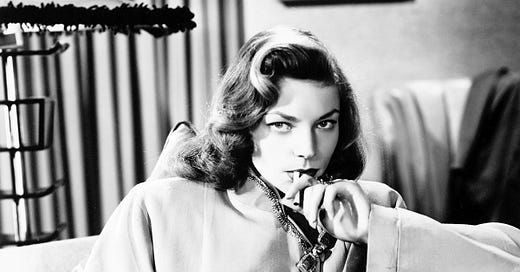It has been suggested I write about glamour.
Very well.
As a social aesthetic, glamour is a counterpart to sprezzatura. Both are courtly talents.
One is made —no one is born— glamorous.
Glamour puts the G in l’amour.
In myth, a quality of the trickster.
Glamour entails theatricality, dress-up. It is the set and the set-up.
TURN ON
TUNE IN / TUNE OUT
Baldr is not glamorous, he is virtuous. Loki, taking different shapes to have sex with horses giantesses and goddesses, is glamorous. Glamour is used for seduction.
(And what is seduction used for?)
The Ladies of the Lake that capture men are either glamorous and can seduce them, or they kidnap them. The song of the siren is glamorous, and Vivian’s seduction of Merlin is too. Hylas’s kidnapping is as unglamorous as Apollo chasing after Daphne.
Zeus’s seduction of Leda is glamorous; Persephone’s rapture is not.
Glamour is for shapeshifters (although Proteus is not glamorous, because there’s no seduction in his overcoming, only outwrestling him).
The birthstone of glamour is time.
The fairy world seems glamorous to outsiders. It is neither beautiful nor unbeautiful, as beauty is accessory to glamour. Glamour can emulate it without being imitative. It is the suspension of time from the inside.
Suspense is the genre of glamour.
Still of Lauren Bacall in Dark Passage (Warner Bros., 1947).





It is 3:43 AM as I am reading this -- Night is glamorous.